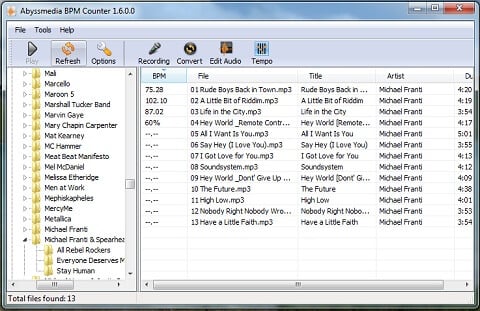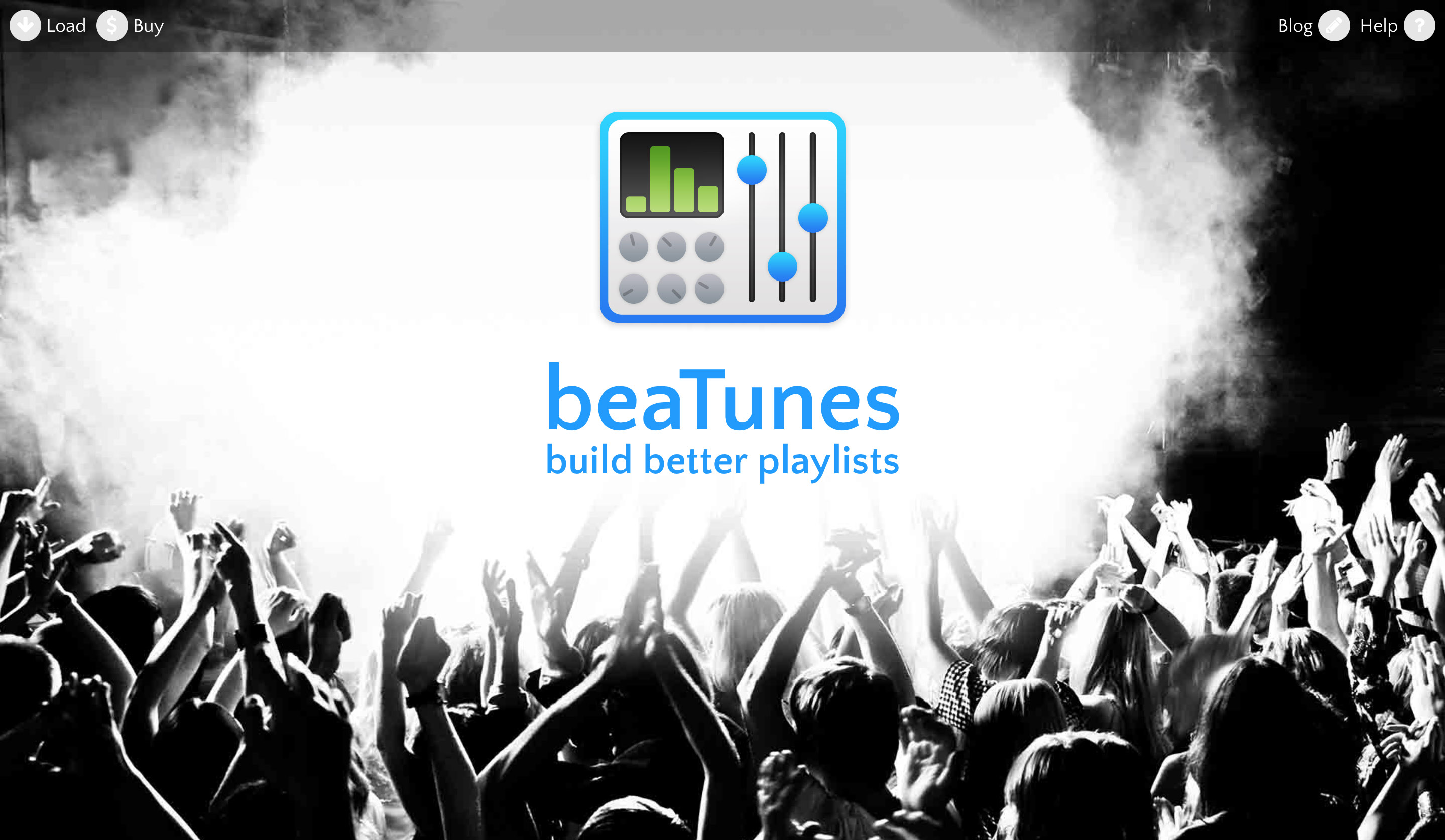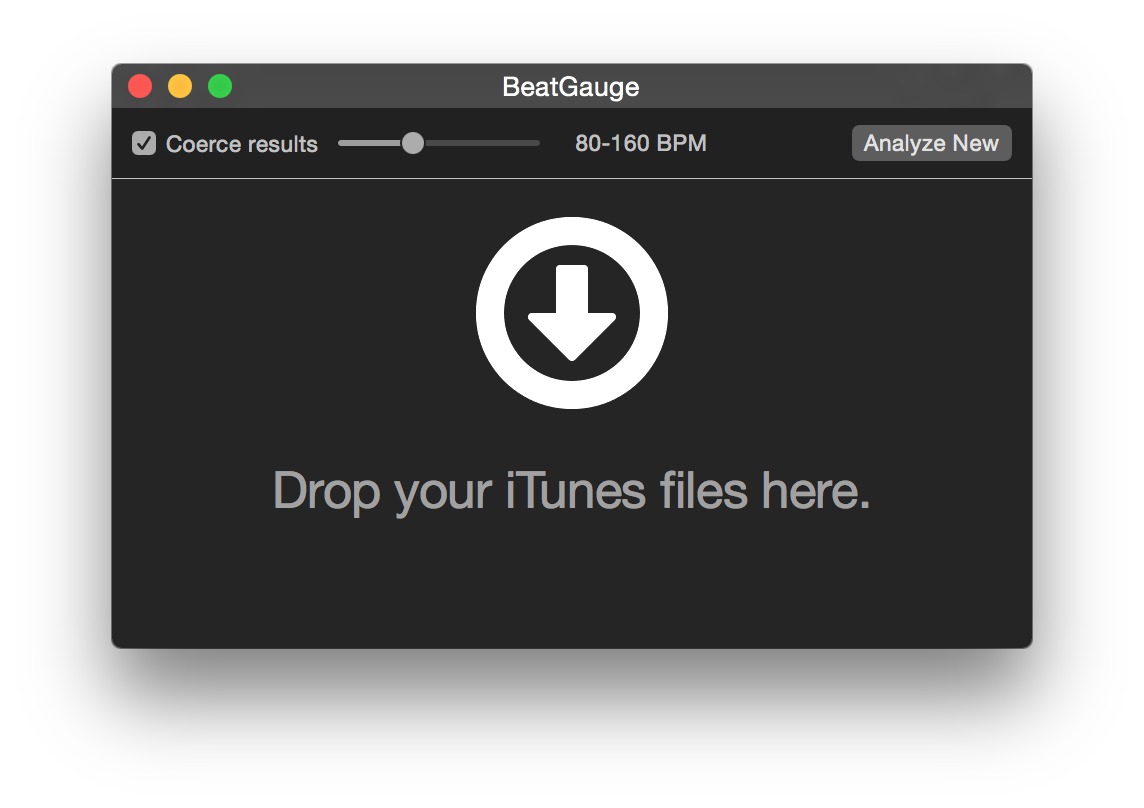So with your playlist now analysed, you can add the BPM tags to every song. If you have a penchant for 1980s pop, you will notice that Girls Just Wanna Have Fun by Cyndi Lauper has a tempo of exactly 120 BPM. Nov 13, 2011 View BPM in iTunes. Use MixMeister to get BPM if your mp3 doesn't already have it. Create a smart playlist to find songs within a BPM range. The analyze files function processes the music in your library to detect file corruption, build and save waveform overview to an ID3 tag, and calculate auto-gain, key and BPM values (if these options are selected). Analyze your files To analyze files you will need to run your Serato software in Offline mode.
Analyze Bpm In Itunes Store
Back in the good old days of creating beats per minute, we’d use a stopwatch and a pen. But those days are thankfully way in the past, replaced by modern technology that accurately calculates BPM to decimal places. And while iTunes has supported a BPM field for some, there hasn’t been much in the way of auto BPM software. But BeatGauge from tagtraum industries looks to fill that gap.
Here’s the official press release:
BeatGauge – filling the iTunes BPM column with ease
Cologne, Germany May 10, 2015 in Music
Cologne based indie software shop, tagtraum industries has announced BeatGauge, a new music utility for Mac OS X. BeatGauge automatically calculates BPM (beats per minute) for songs stored in iTunes. Implemented as drag’n’drop app, BeatGauge is dead-simple to use: Simply drop songs onto the app window and watch BeatGauge do its magic. Knowing the tempo of songs is important for dancers, DJs, spinning, aerobics, running, and many other beat-oriented activities and workouts.
[prMac.com] Cologne, Germany – tagtraum industries has announced BeatGauge, a new music utility for Mac OS X. BeatGauge automatically calculates BPM (beats per minute) for songs stored in iTunes. Implemented as drag’n’drop app, BeatGauge is dead-simple to use: Simply drop songs onto the app window and watch BeatGauge do its magic. All BPM values are automatically imported into iTunes.
Knowing the tempo of songs is important for dancers, DJs, spinning (indoor cycling), aerobics, running, and many other beat-oriented activities and workouts. It helps tremendously, when creating playlists that match the desired workout intensity or pace.
Features:
- Very simple, intuitive user interface
- BPM values are imported into iTunes
- Quickly finds and analyzes songs without BPM
- Multi-threaded analysis that makes perfect use of multi-core processors
- Supports all local, unprotected iTunes audio file formats
- AppleScript API for power users
Notes:
- Requires OS X 10.10 (Yosemite)
- Music files must be locally stored in iTunes and writable
- iCloud songs must be downloaded before analysis
- DRM protected songs cannot be analyzed
- State-of-the-art BPM detection is not 100% accurate – some values may be off by a factor of 2
Language support:
U.S. English, German, French, Spanish, Dutch, Korean, Japanese, Italian, Simplified Chinese
Pricing and Availability:
BeatGauge is available for $7.99 (USD) in the Apple Mac App Store.
BeatGauge Reviewers Guide:
http://www.tagtraum.com/download/BeatGauge-1-Reviewers-Guide.pdf
BeatGauge Website:
http://www.tagtraum.com/beatgauge.html
BeatGauge Mac App Store:
http://itunes.apple.com/app/id974010176
For those serious about DJing, you’ve probably already got all the BPM tools you need built into your software of choice. But for everyone else, or those using iTunes to manage playlists, BeatGauge offers a built-in and extremely quick way to make use of that unused BPM column in iTunes.
I watched the demo video and thought it had been speeded up. So I bought the app myself, threw 337 Hip Hop tracks at it, and 90 seconds later, I had a fully populated BPM column. So it’s fast, and doing it right inside iTunes.
But even the very best BPM detector is off sometimes, and usually either double or half timed, and BeatGauge is no exception. But you can “coerce” the results to be within a particular range. That said, some tracks stubbornly refused to analyse properly despite having a solid defined beat. BDP’s “Jimmy” wouldn’t analyse accurately even when coerced. Don’t worry — there’s always one that gives the assorted algorithms a headache. Serato DJ and Traktor Pro calls it wrong too, but Virtual DJ and djay pro got it right. Importantly however, only BeatGauge writes the tag back to iTunes.
BeatGauge does exactly what it says it does, a single track or a playlist at a time, or indeed your whole library quickly, accurately, and right within iTunes. So for me, it’s a big thumbs up.
I have figured out a way to add Beats Per Minute to music in iTunes using free software (for those using Windows):

1) Install foobar2000. When you double click on the exe file to install it, you can select to add a portable version or install it.
2) After installation, install a plugin to foobar2000 named 'BPM Analyser' (they call plugins 'components'). The download will have an extension named *.fb2k-component.
3) Open foobar2000 and set up the left pane named 'Album List' so it has the folder where your iTunes music is stored. Right click on any song or groups of songs and select 'BPM Analyser'. Then select 'Automatically analyze BPMs' to show results. You can check to see if you agree with the results by playing the song and right clicking on the songs again and selecting 'Manually tap BPM for current track'. It will display a button that you can tap in time with the music. You can then compare the two numbers to see if they agree and then press the button 'Update File' to add the number to the BMP tag in the music file. Of course if you trust the automatic calculation, you can click on 'Update File' when it is done. I have found the automatic calculation is usually accurate though occasionally off.
4) Install Mp3tag:
Analyze Bpm In Itunes Account
The foobar plugin just adds the number to the BPM field. iTunes requires that each entry to have ' BPM' entered after the number. After installing Mp3tag, open the music file that you changed with foobar. You will need to add a heading for BPM because it won't be there by default. Do this by right clicking on the column headings. Highlight the files you want to change and then click on the 'Convert' pull down menu and select 'Tag – Tag'. Select 'BPM' in the pull down list and enter the following in the 'Format String':

%BPM% BPM
Then click on the 'OK' button. Mp3tag will add some lead zeros to the number and that is OK.

5) Open iTunes and display the the 'Songs' view. Add the BPM column heading if you haven't already. The BPM field will be blank. You can play the song or right click on the song and select 'Song Info' to make it update the tag information. This will take too long if you have added very many BPM counts.
Download the 'UpdateTagInfo' script from here:
Highlight the songs you want to update in iTunes. Double click on the file 'UpdateTagInfo.vbs' and then click on 'Yes'. This will update all the files you selected.
There are quite a few steps but it doesn't usually take long once you do it a few times. Step 3 may take some time if you select hundreds of songs.
iTunes-OTHER, Windows 8
Posted on
Comments are closed.